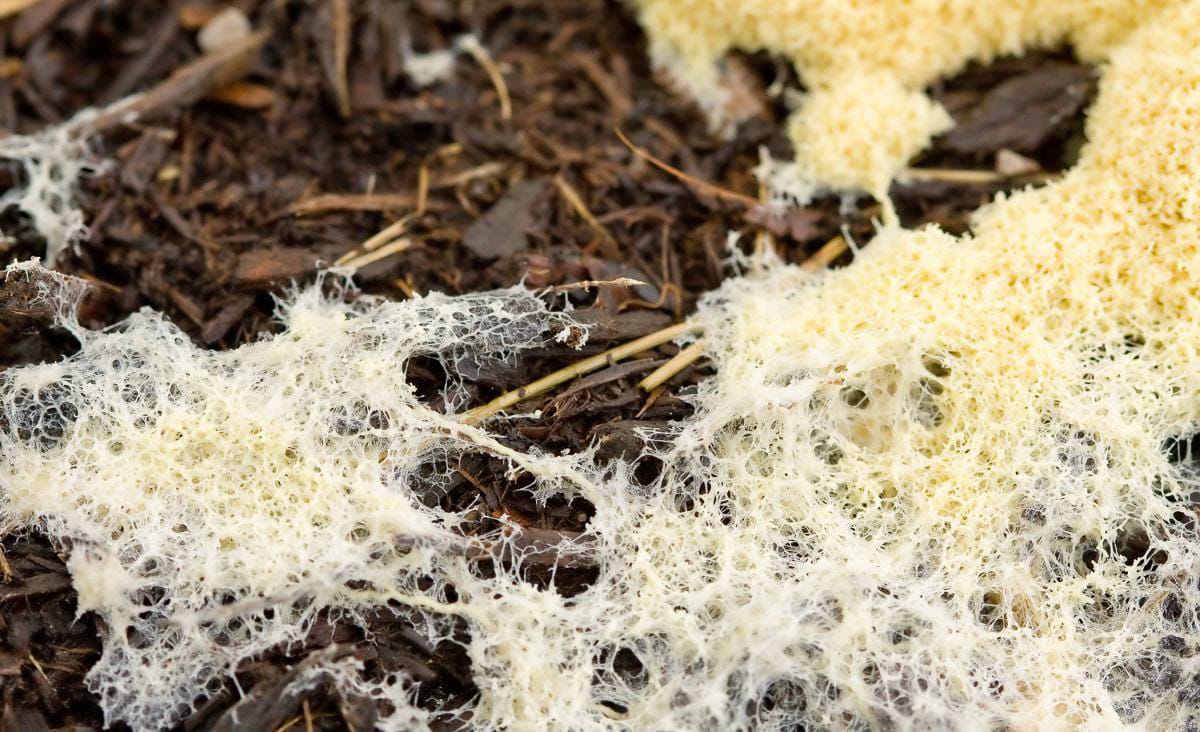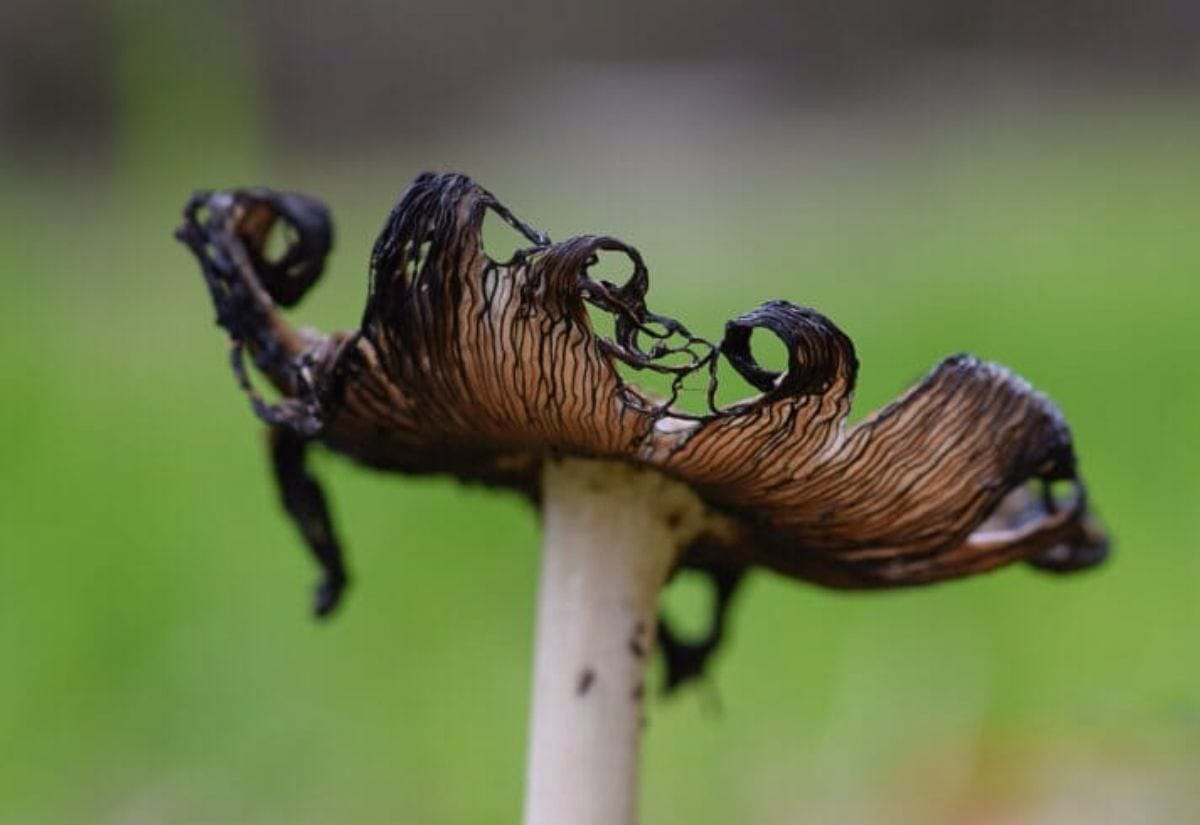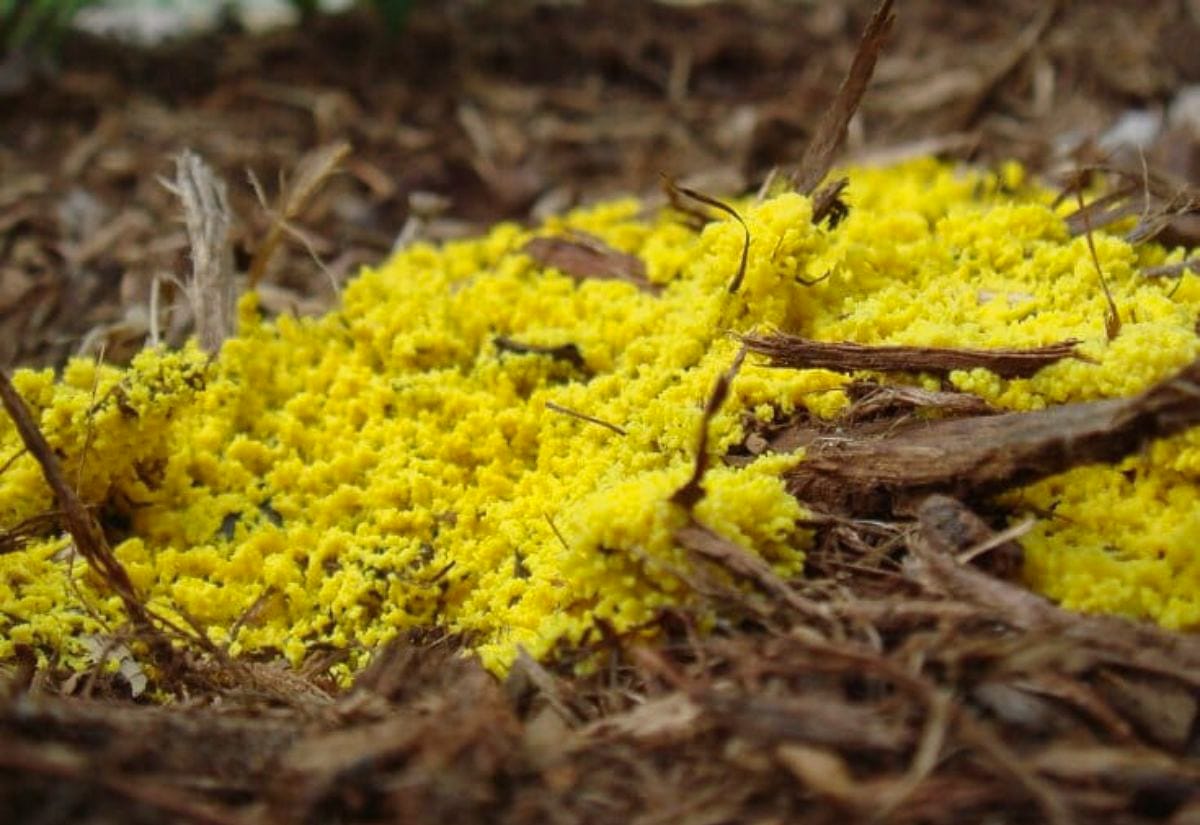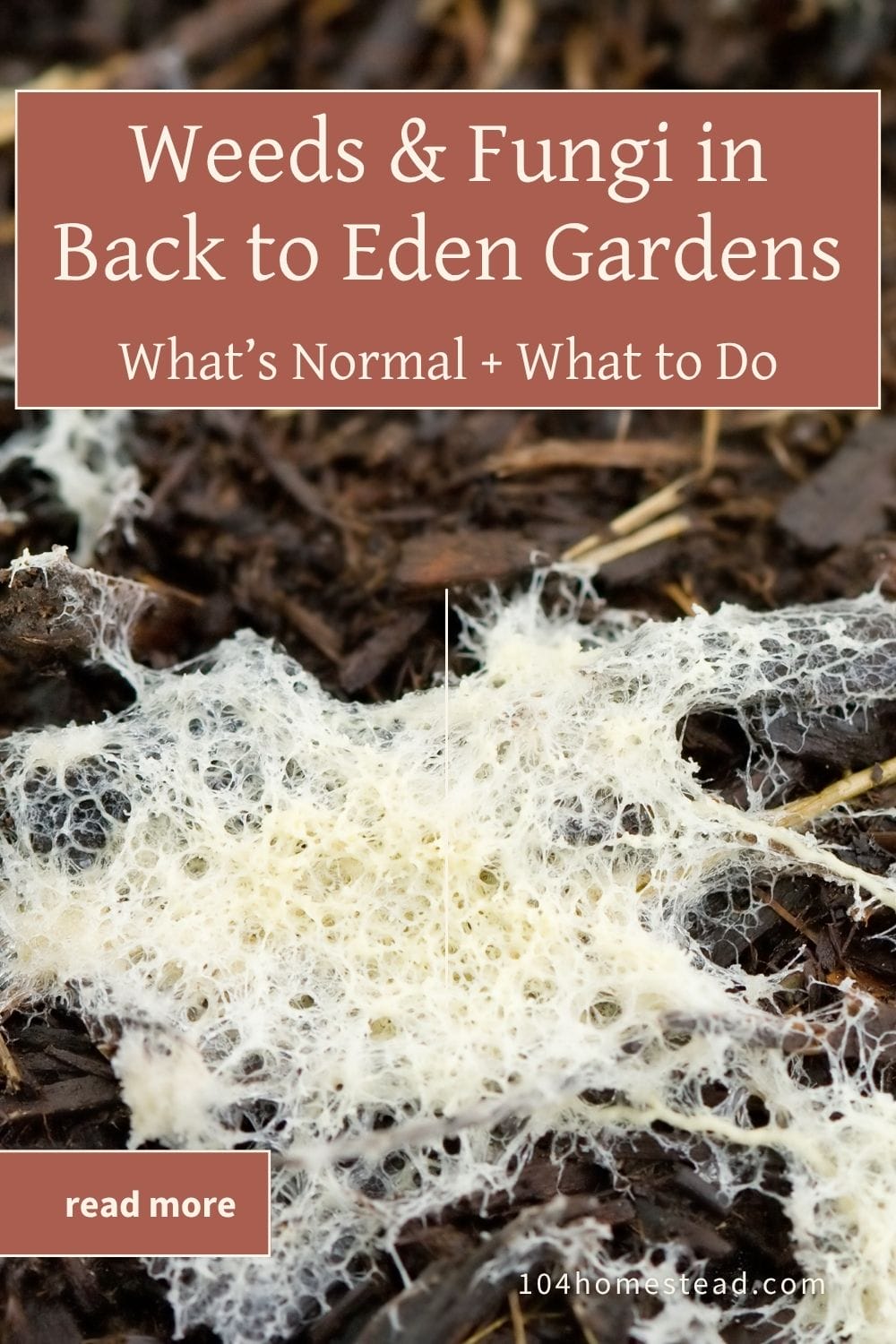Weeds and Mushrooms in a Back to Eden Garden
Seeing mushrooms or weeds in your Back to Eden garden? Learn why they show up, what they mean, and how to manage them the right way.

I’ll be the first to admit—my garden’s been a little behind this year. But even in a slow season, there are two things that keep me singing praises about my Back to Eden setup: I barely have to weed, and I never worry about watering. That alone makes the method worth it.
New to this gardening method? If you’re wondering what makes a Back to Eden garden work so well, this post breaks down the theory behind the method and why it’s such a game changer.
Unless I’m germinating seeds, I don’t pull out the hose. The soil stays damp several inches down, even when we’ve gone through dry spells. And weeding? I can clear my entire 1,000-square-foot garden in under an hour—even if I’ve ignored it for months.
Let’s talk about why that happens… and what to make of the mushrooms and slime molds that pop up along the way.
Why You’ll Still Find Weeds in a Back to Eden Garden
No garden is 100% weed-free. But this method comes pretty close—if you’re using it correctly.
Weeds in a Back to Eden garden show up most often where the wood chips have been pulled back. That’s usually around seedlings or transplants you’re tucking into the soil. When the earth is exposed, weeds see an opportunity.
Tip: Only pull your chips back just enough to avoid smothering the base of the plant. Once it’s settled in, gently push those chips back into place to cover the bare soil.
Until then, a light mulch of grass clippings or shredded leaves around each seedling can help suppress weeds and lock in moisture.
The Truth About Mushrooms, Fungi, and Slime Mold
If you’re seeing mushrooms sprout or slime mold bubble up on the surface of your garden, don’t panic—that’s a good thing.

Mushrooms Mean Decomposition Is Happening
Mushrooms show up when your wood chips are breaking down and feeding your soil. You don’t need to pull them. They’re not hurting your plants—in fact, they’re part of what’s helping them thrive.
Some gardeners even go a step further and inoculate their wood chip mulch with edible mushrooms like wine caps.
What About That Yellow Foam?
Slime mold is another decomposer—and while it looks strange (and maybe a little gross), it’s helping too. It usually shows up as a yellowish, foamy mass that resembles scrambled eggs or cat vomit.
If the sight of it bothers you, grab a garden rake and mix it into the mulch. Otherwise? Leave it alone and let it work.

Pro tip: Mushrooms and slime mold are signs of microbial activity. That means your garden soil is alive and well.
Quick Tips for Keeping Weeds Down
While the Back to Eden method makes weeding easier, these practices help keep things even more manageable:
- Use a deep layer of wood chips: 4–6 inches is ideal for weed suppression.
- Avoid tilling: Tilling disrupts soil structure and brings weed seeds to the surface.
- Stay consistent: A monthly garden walk is usually enough to pull anything that sneaks in.
Curious about how fertilizing works in a Back to Eden garden? Learn why too much of a good thing can hurt your soil—and how nitrogen-binding plays a role—in this deep dive into fertilizing the no-till way.
Frequently Asked Questions
Still have questions? Here’s what gardeners often ask about weeds and fungi in a Back to Eden garden.
Save this post to find out what weeds and mushrooms really mean to a BTE garden—and how to manage them the low-maintenance way.

If you’re finding a few weeds or spotting mushrooms in your garden, it’s not a problem—it’s a sign things are working. This method thrives on natural decomposition, minimal disturbance, and learning to work with the environment instead of fighting it.
Don’t stress every little sprout or speck of mold. Step back, let the system do its thing, and step in only when needed.
Your garden’s got this—and so do you.

Our back to eden garden is always overrun with weeds. Really tempted to till them up. What are we doing wrong?
It could be one of two things. Either your top layer (the woodchips) isn’t thick enough – you want a nice deep layer, or you’re top dressing with something that has seeds in it. Are you using compost or manure? If so, how old is it and where are you getting it from? I find it I add goat manure that is relatively fresh, the seeds from they hay they eat aren’t broken down fully and can lead to weeds in the garden. I now only add manures that have aged and been turned a few times.
It doesn’t sound like you had much weeding to do at all. That’s awesome!
Thanks again for linking up with Green Thumb Thursday. We’d love to see you back again this week!
Lisa